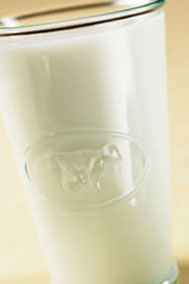Good Nutrition is Important

Healthy foods and juices
by Mark Hughes
 Related Links |
When your cell phone runs low on power, you plug it in. Electricity is your phone’s source of energy. People need energy, too, but we can’t simply plug ourselves in to get it. Instead, we need food to fuel our bodies. Not all foods, however, give us the same energy. Some foods provide energy to think, form memories, and perform physical activities, while others only slow us down. The key is learning how to make the right decisions when choosing what to eat.
Making healthy choices
Which is healthier, a muffin or a banana? A sports drink or a glass of milk? People face such questions all the time. With a little information and some guidelines, you can learn how to spot the healthier choice. Here are some tips for distinguishing between good (healthy) and bad (unhealthy) foods.
| Good foods include… | Whole grains, such as whole-wheat breads and cereals, fruits, vegetables, lean meats, milk, water |
| Bad foods include… | White bread, fried foods, processed foods (packaged chips, cookies, candy bars), soda |
Healthy is always an option
Imagine you’re at a snack bar, do you choose an apple, a yogurt, or a candy bar? If your stomach is growling, don’t let it lead you to make unhealthy decisions. Below are suggestions for replacing unhealthy foods with healthier alternatives.
| Unhealthy Food | Healthier Option | It’s better because… |
|---|---|---|
| fruit drinks that are not 100% juice | skim milk, water, or 100% fruit juice | less calories and sugar, more protein (milk) |
| biscuits, rolls, white breads | low-fat whole-grain breads and rolls | lower in fat and higher in fiber. The whole grains will keep you feeling fuller longer, and they provide more energy. |
| doughnuts | whole-grain bagel, English muffin | less fat and fewer calories |
| French fries, hash browns | baked, mashed, or boiled potatoes or sweet potatoes | less fat, no trans-fats, less sodium, fewer calories |
| fresh fruit in syrup | fresh fruit in natural juices | less sugar and fewer calories |
| fried tortillas | soft tortillas (corn or whole wheat) | less fat, fewer calories, more fiber |
| fruit punch drinks | 100% fruit juice | both have similar amounts of calories, but 100% fruit juice has many more vitamins and nutrients. |
| ice cream | non-dairy frozen dessert, fresh fruit smoothie, sorbet | fewer calories, less fat, less sugar |
| mayonnaise | mustard, hummus, salsa | less fat |
| packaged cookies or cupcakes | granola bar, graham crackers, freshly baked whole-wheat muffin or cupcake | no artificial preservatives, no partially hydrogenated oils (trans-fats), less fat |
| pepperoni, salami, and bologna | turkey, chicken, ham | lean meats have less fat and less cholesterol |
| potato or fried chips | unbuttered popcorn, raw vegetable sticks, pretzels | no artificial preservatives, less fat, more fiber |
| processed cheese (also called prepared cheeses, process cheese, or cheese food)* | low-fat Swiss, cheddar, or mozzarella | no preservatives, less fat, less sodium |
| vegetables fried or served with cheese, cream, or butter sauces | vegetables should be eaten raw, steamed, broiled, baked, or tossed with a little olive oil | fewer calories, less fat, less sodium, no trans-fats, more vitamins and nutrients remain in the vegetables. |
Is Fruit Juice Healthy?
Not all fruit juices are created equal. Some are made with 100% fruit juice, while others have been artificially sweetened. Juices made with 100% fruit will have more vitamins and nutrients than the sweetened variety, even though they might be almost equal in calories. The chart below features the American Academy of Pediatrics recommendations for the amount of fruit juice people should drink each day.
| Age | 100% Fruit Juice, Recommended Amount |
|---|---|
| Infant to 6 months | Children this age should not drink fruit juice. |
| 6 months to 1 year | Up to 4 ounces* a day |
| 1 to 6 years | Up to 6 ounces a day |
| 6 years and older | Up to 12 ounces a day |
- More from Health and Body
